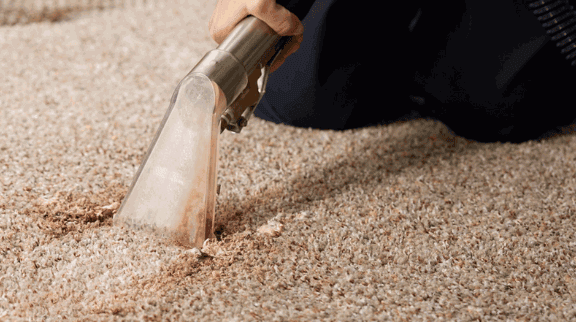
Looking to give your carpets a fresh makeover without breaking the bank?
This guide will walk you through the step-by-step process of DIY carpet cleaning. From the essential tools and materials you need to effective cleaning tips and tricks, we've got you covered.
Whether you're dealing with tough stains or stubborn odors, we'll show you how to tackle them like a pro. So grab your vacuum cleaner and get ready to transform your carpets with our easy-to-follow instructions.
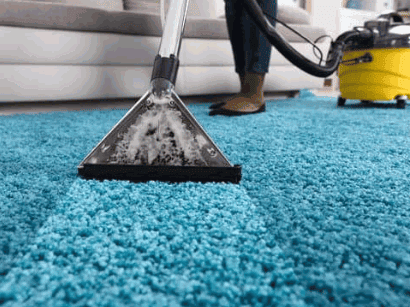
What Tools And Materials Do You Need?
Table of Contents
To effectively clean your carpet, you will need various tools and materials such as a vacuum cleaner, carpet cleaning solution, bucket, scrub brush, clean towels, and optionally, a steam cleaner.
Each of these tools plays a crucial role in the carpet cleaning process. The vacuum cleaner is essential for removing loose dirt, dust, and debris. The carpet cleaning solution helps break down stains and odours, leaving your carpet fresh and clean. A bucket is useful for mixing and carrying cleaning solutions, while a scrub brush enables you to target and scrub tough stains.
Having clean towels on hand is important for blotting and drying the carpet after cleaning. The optional steam cleaner can provide a deeper clean by using hot water vapour to lift embedded dirt and grime from the carpet fibres.
Vacuum Cleaner
The hoover is a crucial tool for carpet cleaning as it helps remove dirt, dust, and bacteria trapped in the carpet fibres.
Regular hoovering plays a vital role in maintaining the cleanliness and hygiene of your carpet. By ensuring you hoover frequently, you can prevent the build-up of allergens and pathogens that can negatively impact your indoor air quality. Different types of hoovers are available to suit various carpet materials and sizes, ranging from upright hoovers for deep cleaning to lightweight stick hoovers for quick touch-ups.
It is essential to use the appropriate hoover based on your carpet type to avoid damaging the fibres. For high-pile carpets, consider opting for a hoover with adjustable height settings to prevent excessive wear and tear. Utilising HEPA filters in your hoover can help capture smaller particles and improve the overall air quality in your home.
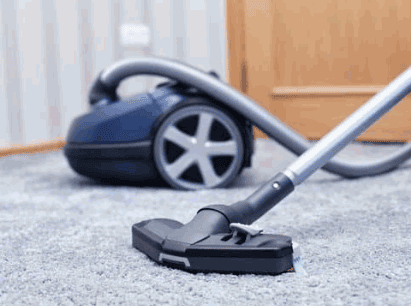
Carpet Cleaning Solution
Choosing the right carpet cleaning solution is essential for effective stain removal and overall cleanliness.
Regarding carpet cleaning solutions, there is a range of options available to cater to various cleaning needs. Homemade remedies using common household items like vinegar, baking soda, and salt are popular choices for eco-conscious individuals looking to avoid harsh chemicals. These natural ingredients are not only environmentally friendly but also effective in removing common stains and odours.
For tougher stains or specific odours, commercial cleaners formulated for carpets can provide targeted solutions. They are designed to tackle different types of stains, from pet accidents to wine spills, with specialised ingredients that help break down and lift the dirt or odours.
Before applying any cleaning solution, it's advisable to test it on a small inconspicuous area of the carpet to ensure it does not cause discolouration or damage. This precautionary step can help prevent any unwanted effects on the carpet's fibres and colours, ensuring a successful cleaning process.
Learn more: What's The Best Carpet Cleaning Solution
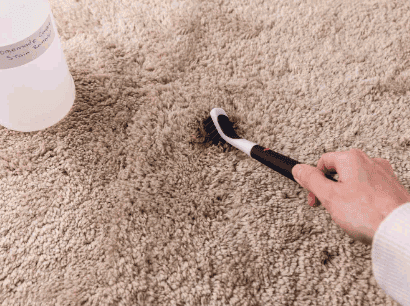
Bucket
A bucket is a handy tool for mixing and carrying your carpet cleaning solution while ensuring you have an adequate supply of water for the cleaning process.
When selecting a bucket for carpet cleaning, it's essential to consider both the size and material.
Size matters because you want a bucket that can hold enough solution and water to cover the size of the area you are cleaning without needing frequent refills. Opting for a larger bucket can save you time and effort during the cleaning process.
The material of the bucket is also crucial; a durable plastic or metal bucket is recommended to withstand the various cleaning chemicals without deteriorating. Choose a bucket with a sturdy handle for easy carrying and pouring as you move from one section of the carpet to another.
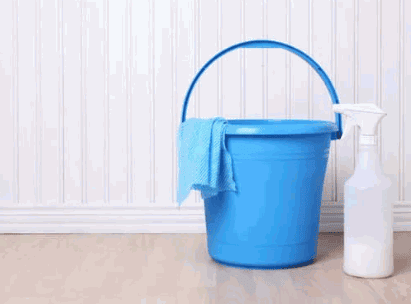
Scrub Brush
A scrub brush is effective in loosening dirt and stains from the carpet fibres, allowing for a thorough cleaning process.
What makes the scrub brush a crucial tool in carpet cleaning is its ability to agitate the cleaning solution deeply into the carpet fibres, reaching those stubborn dirt particles that ordinary vacuuming may miss. By using a scrub brush, one can ensure a more comprehensive cleaning that goes beyond the surface level, resulting in a fresher and revitalised carpet.
When selecting the right scrub brush, it is essential to consider the material of the carpet and the intensity of the stains. For delicate carpets, opt for softer bristle brushes to avoid damage, while for tougher stains, a more abrasive brush might be necessary to effectively lift the dirt.
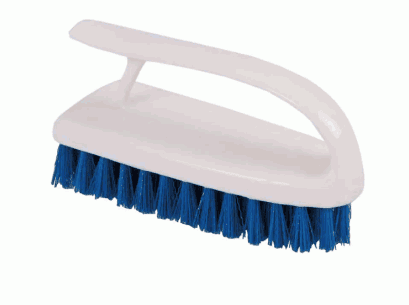
Clean Towels
Clean towels are essential for dabbing and absorbing excess moisture during the carpet cleaning process, preventing mould or mildew growth.
Choosing the right type of towel is crucial based on the carpet material - microfibre towels work well for delicate fibres, while cotton towels are suitable for thicker carpets. Larger towels are ideal for big carpet areas, ensuring effective drying. To avoid spreading dirt and stains, it is recommended to gently press the towel onto the wet spot rather than rubbing it vigorously. After using the towel, it's essential to wash them immediately to prevent bacterial growth and maintain their absorbency for future use.
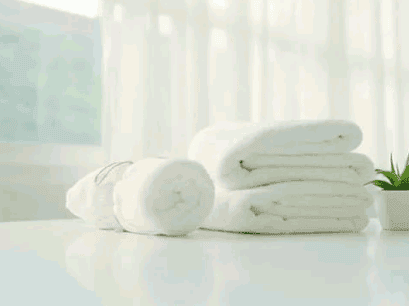
Steam Cleaner (Optional)
A steam cleaner can be used for deep cleaning carpets by applying hot steam to penetrate and sanitize the carpet fibers effectively.
Using a steam cleaner offers numerous advantages when it comes to maintaining the cleanliness of your carpets. Not only does the hot steam help to eliminate tough stains and odors, but it also kills bacteria and allergens that may be lurking within the carpet fibers. This deep-cleaning method not only refreshes the appearance of your carpets but also contributes to a healthier indoor environment.
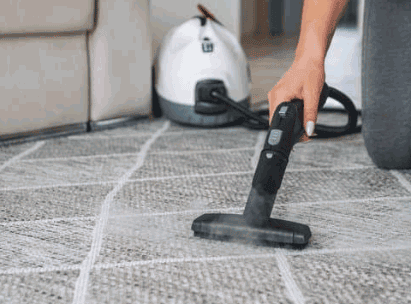
Step-By-Step Guide For DIY Carpet Cleaning
- Follow this step-by-step guide for DIY carpet cleaning to achieve a fresh and spotless carpet using simple yet effective cleaning methods.
- To start the carpet cleaning process, the first step is to prepare the area by removing any furniture and thoroughly vacuuming the carpet surface to eliminate loose dirt and debris. It is crucial to choose the right cleaning solution for your carpet type; for instance, wool carpets may require a different product than synthetic ones. After selecting the appropriate cleaner, apply it to the carpet according to the manufacturer's instructions, focusing on high-traffic areas and stains.
Prepare The Room
Before starting the carpet cleaning process, it is essential to prepare the room by removing furniture, clearing the carpeted area, and ensuring proper ventilation.
Organising the space before cleaning not only makes the process smoother but also ensures optimal results. Protecting furniture by either moving it out of the room or covering it with plastic sheets prevents any potential damage from cleaning solutions or water. Adequate airflow allows the carpet to dry efficiently, reducing the risk of mould or mildew growth. Opening windows and using fans can help speed up the drying process, especially in humid climates.
Vacuum The Carpet
Start the carpet cleaning process by thoroughly vacuuming the carpet to remove surface dirt, dust, and allergens for a cleaner foundation.
Regarding carpet cleaning, vacuuming is the crucial first step in maintaining a healthy and fresh environment. By regularly vacuuming, you can effectively get rid of loose debris that accumulates on the surface of the carpet, preventing it from being ground deeper into the fibres. It not only enhances the appearance of your carpet but also extends its lifespan.
To achieve optimal results, it is essential to vacuum in the correct direction. Remember to go over each section multiple times, especially in high-traffic areas where dirt tends to accumulate quickly.
Utilising attachments such as crevice tools and upholstery brushes can help you reach corners and crevices that a standard vacuum head may miss. Adjusting the height of the vacuum cleaner to the appropriate level for your carpet type ensures thorough cleaning without causing damage.
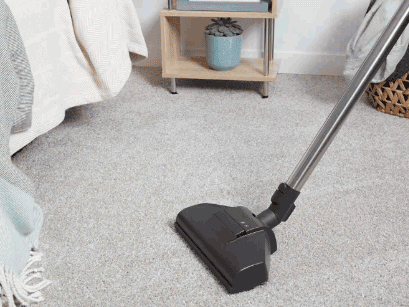
Spot Clean Stains
Address stubborn stains on the carpet by spot cleaning with appropriate solutions and techniques to prevent them from setting and becoming more challenging to remove.
It is crucial to tackling carpet stains promptly to avoid permanent damage and unsightly discolouration. Different stains require specific treatment methods based on their nature and composition. For instance, grease stains need a different approach than pet urine stains. By understanding the type of stain you are dealing with, you can choose the most effective cleaning solution.
Before applying any cleaning product, it is advisable to test it on a small inconspicuous area of the carpet to check for colourfastness and any adverse reactions. This precaution can prevent further damage to your carpet while ensuring successful stain removal.
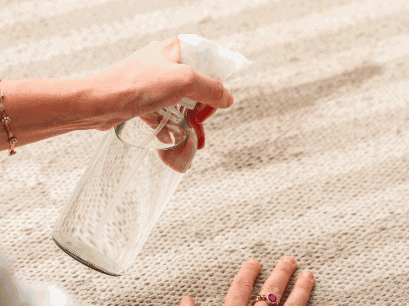
Mix And Apply Carpet Cleaning Solution
Prepare a carpet cleaning solution by mixing vinegar, bicarbonate of soda, salt, or commercial cleaners with water for a potent yet gentle cleaning mixture.
Mixing your preferred ingredients together will create a powerful solution capable of tackling tough stains and grime embedded in the fibres of your carpet. Using natural ingredients like vinegar and bicarbonate of soda ensures that your cleaning process is eco-friendly and safe for your health.
If you opt for store-bought cleaners, make sure to check the label to ensure they are suitable for your specific type of carpet material. Different materials like wool or nylon may require different cleaning solutions to prevent any damage during the cleaning process.
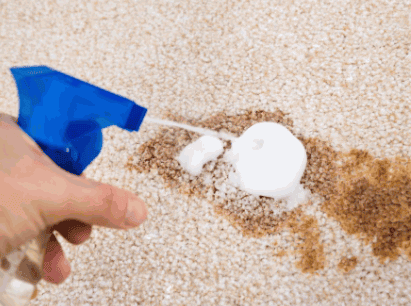
Scrub And Rinse The Carpet
Use a scrubbing brush to agitate the cleaning solution into the carpet fibres, then rinse the carpet thoroughly to remove dirt, residues, and cleaning agents.
When scrubbing the carpet, it's essential to apply gentle yet firm pressure to work the cleaning solution deep into the fibres without causing damage. Thorough agitation is key to loosening stubborn dirt and grime, making it easier to lift off during rinsing.
For effective rinsing, ensure you use clean water and a proper extraction method to eliminate any remaining cleaning agents. A two-step rinsing process can be beneficial to guarantee all residues are completely removed, leaving your carpet fresh and free of any detergent buildup.
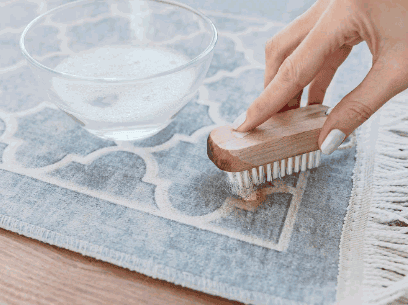
Dry The Carpet
After cleaning and rinsing the carpet, use clean towels to blot and absorb excess moisture, then allow the carpet to air dry completely for a fresh and dry finish.
The proper drying of carpets after cleaning is vital to prevent mould growth and maintain the carpet's condition. Proper drying not only ensures a clean and fresh finish but also helps in extending the lifespan of your carpet.
To expedite the drying process, consider using multiple towels for blotting. Promoting air circulation in the room by opening windows or using fans can help speed up the drying time.
Tips And Tricks For Effective DIY Carpet Cleaning
Enhance your DIY carpet cleaning results with these valuable tips and tricks that address tough stains, odours, testing solutions, and deep cleaning methods.
- One effective technique for handling tough stains is to blot the affected area with soda water, which can help lift the stain without damaging the carpet fibres.
- Sprinkling bicarbonate of soda on the carpet before vacuuming can help eliminate odours and freshen up the fibres.
- When testing cleaning solutions, always remember to spot-test on a hidden area to ensure compatibility with your carpet material.
For a thorough clean, consider using a steam cleaner to penetrate deep into the carpet and remove embedded dirt and grime. Regular deep cleaning not only improves the appearance of your carpet but also prolongs its lifespan by preventing the build-up of dirt and allergens.
Use Club Soda For Tough Stains
Soda water is a useful remedy for dealing with stubborn stains on carpets, offering efficient cleaning power without harming the carpet fibres.
One of the main advantages of using soda water as a natural stain remover is its capability to break down and lift persistent stains from carpets. Its bubbly nature helps to release the stain particles, making them easier to eliminate. Additionally, soda water is a non-toxic and eco-friendly substitute for strong chemical cleaners, ensuring it is safe for both your family and pets.
When utilising soda water as a stain remover, the process is straightforward and successful.
First, soak the stained area with soda water and allow it to settle for a few minutes. Then, gently dab the stain with a fresh cloth or kitchen roll, soaking up the liquid along with the stain particles. Repeat the procedure if necessary until the stain is completely removed. This method not only aids in erasing the stain but also revitalises the carpet.
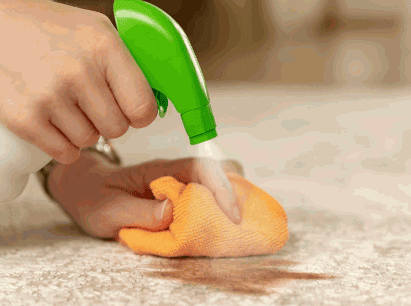
Use Baking Soda For Odours
Bicarbonate of soda is a versatile ingredient for neutralising odours and freshening up carpets during the cleaning process, leaving behind a clean scent.
Regarding deodorising carpets, bicarbonate of soda acts as a powerful odour eliminator that absorbs and neutralises unwanted smells effectively. Its fine particles penetrate deep into carpet fibres, targeting odours at their source rather than just masking them. Simply sprinkle a generous amount of bicarbonate of soda evenly over the carpet surface, allowing it to sit for at least 15-30 minutes to work its magic.
Once the bicarbonate of soda has had time to absorb the odours, vacuum the carpet thoroughly to remove the powder along with the trapped smells. For stubborn or lingering odours, a longer treatment time or multiple applications may be necessary. Using bicarbonate of soda regularly can help maintain a pleasant indoor environment, free from any unwanted odours.
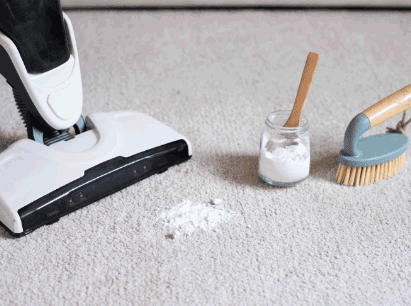
Test Cleaning Solutions On A Small Area First
Before applying a cleaning solution to the entire carpet, it is advisable to perform a patch test on a small inconspicuous area to check for colourfastness and compatibility.
Here's how you can conduct a patch test:
- Mix a small amount of the cleaning solution as per the manufacturer's instructions.
- Apply a few drops on a hidden corner of the carpet and blot it with a clean white cloth after a few minutes.
- If you notice any colour transfer or damage to the carpet fibres, STOP immediately.
- In case no adverse effects are observed, proceed with caution by gently cleaning the stained area following the same process.
Use A Steam Cleaner For Deep Cleaning
For a thorough and deep cleaning of carpets, consider using a steam cleaner to penetrate the fibres and remove embedded dirt, stains, and bacteria effectively.
Steam cleaners offer a myriad of advantages beyond just cleaning - they sanitise surfaces effectively, killing off harmful germs and bacteria that may be lurking in the carpet. Plus their cleanliness benefits, steam cleaners are also eco-friendly as they typically use less water and chemical cleaning agents compared to traditional methods. This not only benefits your health but also the environment. The high-temperature steam aids in removing tough stains without the need for harsh chemicals, making it a safer option for homes with pets or children.
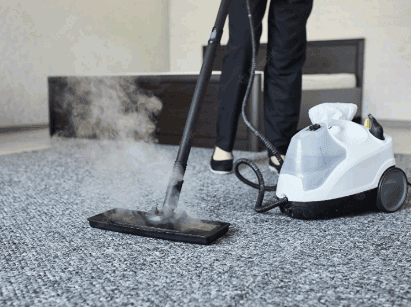
Conclusion
In conclusion, DIY carpet cleaning can be effective and rewarding with the right tools, materials, and cleaning solutions. Whether using homemade remedies like vinegar and bicarbonate of soda or commercial cleaners, the key is to follow a systematic approach to ensure a fresh and revitalised carpet.
When selecting tools, consider a vacuum cleaner with strong suction power to remove dirt and debris efficiently. A carpet brush or scrubber can help loosen embedded soils for a more thorough cleaning.
For materials, opt for microfibre cloths or sponges that are gentle on carpets but effective in absorbing moisture and stains. Choosing the right cleaning solution is crucial. Look for products specifically formulated for carpet cleaning to avoid damage or discolouration.